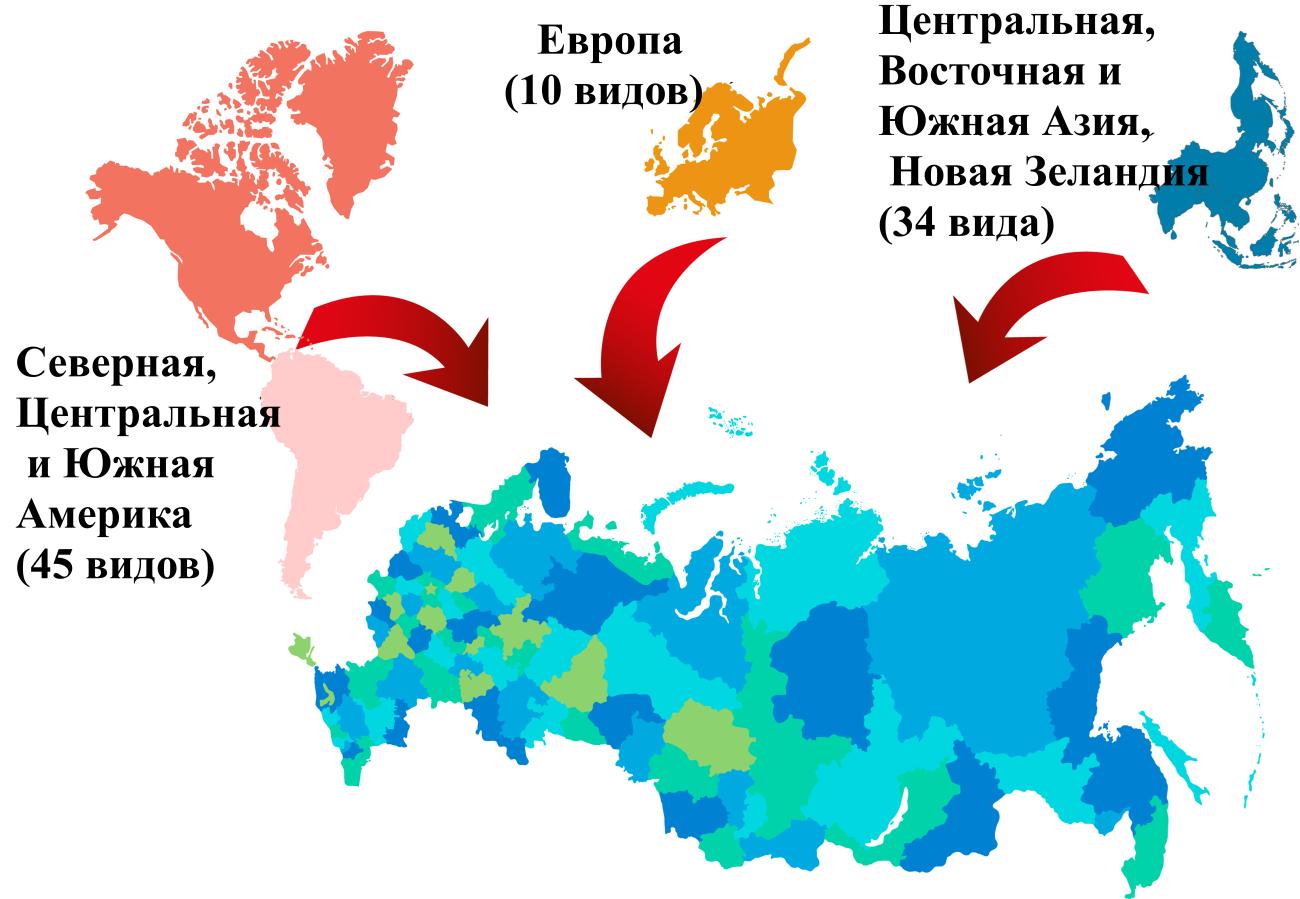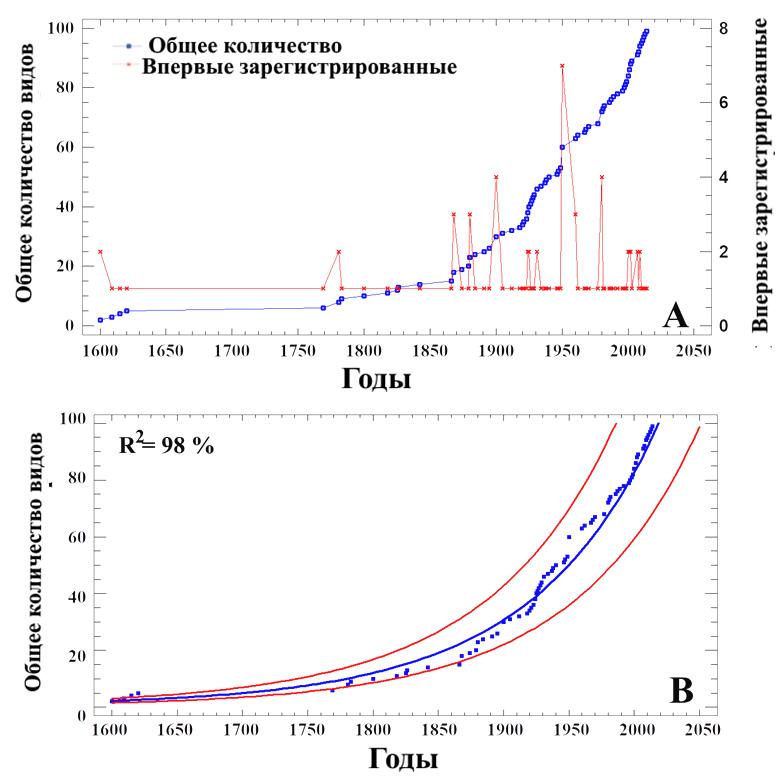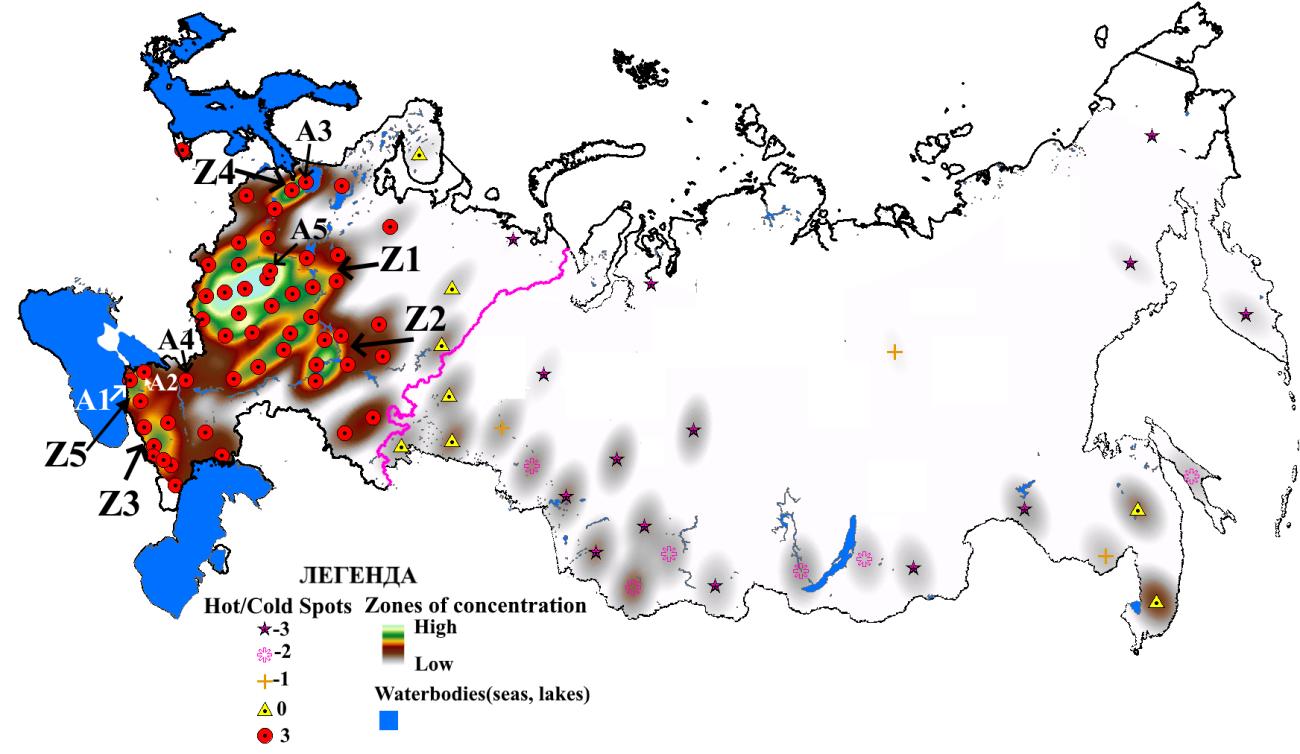The published study is the first deep generalization on the most dangerous invasive species in Russia, performed using ecological modeling methods and geoinformation technologies, which has no analogues both in Russia and abroad.
Biological invasions - the penetration of living organisms beyond the historical distribution area - occur in all countries and on all continents. New (alien to the region) species can belong to various taxonomic groups. Identification of those that pose the greatest threat to biodiversity, ecosystem functioning and economic development is one of the important global tasks for assessing the risk and minimizing the negative consequences of invasions. Lists limited to 100 priority species (TOP-100) were compiled for the whole world in 2000, for Europe in 2009. For Russia, such a list (TOP-100) of the most dangerous invasive species was prepared and published with brief essays in 2018. The list includes a variety of aquatic and terrestrial organisms from bacteria to mammals, vascular plants predominate (29 species), insects ( 15 species) and mammals (10 species). Of this list, 62% of the species were accidentally introduced (brought in) with ballast water, traffic flows, ship fouling, agricultural products, with cultivated plants and plants for landscape design. 33% of the species were deliberately introduced, the remaining 5% spread independently. The homeland of 45% of these species is North and Central America, in second place (34%) is the Asia-Pacific region.
An extensive database has been collected on the actual locations of invasive species finds both in the area of their natural (native) distribution and in the area of invasion. This material, in combination with climatic and other environmental parameters, formed the basis for the creation of mathematically correct and high-precision models of habitat maps suitable for the distribution of invasive species. It has been shown that all of them, with the exception of the teredo mollusk (shashen) and king crab, have regions in Russia suitable for their further distribution. Among the species that are characterized by a high potential for further settlement is the tripartite ragweed, a plant that clogs fields and is a strong allergen.
Using the obtained models of habitats and GIS technologies, zones with a high concentration of invasive species were identified and cartographically visualized. They are located in the economically developed center of the European part of Russia, in the warm regions of southern Russia, including the coastal waters of the Black Sea, and in the Leningrad Region, including the waters of the Gulf of Finland. In these zones, their highest impact on terrestrial and aquatic ecosystems can be expected, and it is there that measures should be taken to limit invasions and the negative consequences of current and future invasion processes.
The study was supported by the Russian Science Foundation (project no. 21-14-00123). The results are published in the international journal NeoBiota (JCR IF4.2; Q1):
Petrosyan V., Osipov F., Feneva I., Dergunova N., Warshavsky A., Khlyap L., Dzialowski A. The TOP-100 most dangerous invasive alien species in Northern Eurasia: invasion trends and species distribution modeling // NeoBiota. 2023. 82: 23–56. https://neobiota.pensoft.net/article/96282/

Fig.1: Main regions of origin of invasive species TOP-100


Related materials:
